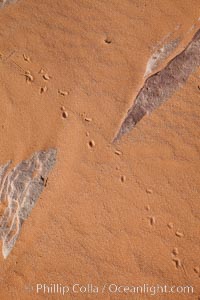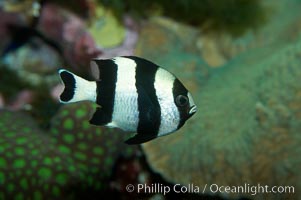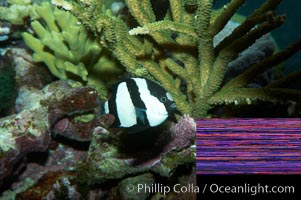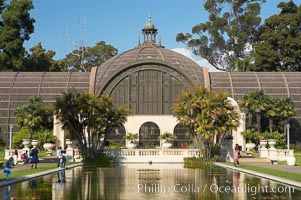
The Botanical Building in Balboa Park, San Diego. The Botanical Building, at 250 feet long by 75 feet wide and 60 feet tall, was the largest wood lath structure in the world when it was built in 1915 for the Panama-California Exposition. The Botanical Building, located on the Prado, west of the Museum of Art, contains about 2,100 permanent tropical plants along with changing seasonal flowers. The Lily Pond, just south of the Botanical Building, is an eloquent example of the use of reflecting pools to enhance architecture. The 193 by 43 foot pond and smaller companion pool were originally referred to as Las Lagunas de las Flores (The Lakes of the Flowers) and were designed as aquatic gardens. The pools contain exotic water lilies and lotus which bloom spring through fall. Balboa Park, San Diego.
Location: Balboa Park, San Diego, California
Image ID: 14578
Location: Balboa Park, San Diego, California
Image ID: 14578
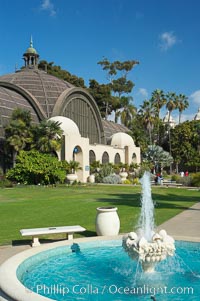
The Botanical Building in Balboa Park, San Diego. The Botanical Building, at 250 feet long by 75 feet wide and 60 feet tall, was the largest wood lath structure in the world when it was built in 1915 for the Panama-California Exposition. The Botanical Building, located on the Prado, west of the Museum of Art, contains about 2,100 permanent tropical plants along with changing seasonal flowers. The Lily Pond, just south of the Botanical Building, is an eloquent example of the use of reflecting pools to enhance architecture. The 193 by 43 foot pond and smaller companion pool were originally referred to as Las Lagunas de las Flores (The Lakes of the Flowers) and were designed as aquatic gardens. The pools contain exotic water lilies and lotus which bloom spring through fall. Balboa Park, San Diego.
Location: Balboa Park, San Diego, California
Image ID: 14582
Location: Balboa Park, San Diego, California
Image ID: 14582
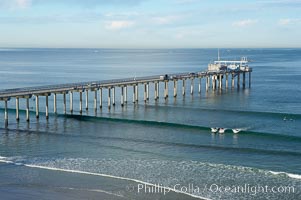
The Scripps Institution of Oceanography research pier is 1090 feet long and was built of reinforced concrete in 1988, replacing the original wooden pier built in 1915. The Scripps Pier is home to a variety of sensing equipment above and below water that collects various oceanographic data. The Scripps research diving facility is located at the foot of the pier. Fresh seawater is pumped from the pier to the many tanks and facilities of SIO, including the Birch Aquarium. The Scripps Pier is named in honor of Ellen Browning Scripps, the most significant donor and benefactor of the Institution.
Location: Scripps Institution of Oceanography, La Jolla, California
Image ID: 14748
Location: Scripps Institution of Oceanography, La Jolla, California
Image ID: 14748
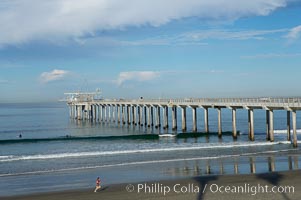
The Scripps Institution of Oceanography research pier is 1090 feet long and was built of reinforced concrete in 1988, replacing the original wooden pier built in 1915. The Scripps Pier is home to a variety of sensing equipment above and below water that collects various oceanographic data. The Scripps research diving facility is located at the foot of the pier. Fresh seawater is pumped from the pier to the many tanks and facilities of SIO, including the Birch Aquarium. The Scripps Pier is named in honor of Ellen Browning Scripps, the most significant donor and benefactor of the Institution.
Location: Scripps Institution of Oceanography, La Jolla, California
Image ID: 14749
Location: Scripps Institution of Oceanography, La Jolla, California
Image ID: 14749
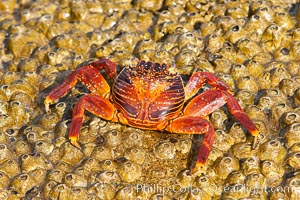
Sally lightfoot crab on barnacles.
Species: Sally lightfoot crab, Grapsus grapsus
Location: North Seymour Island, Galapagos Islands, Ecuador
Image ID: 16604
Species: Sally lightfoot crab, Grapsus grapsus
Location: North Seymour Island, Galapagos Islands, Ecuador
Image ID: 16604
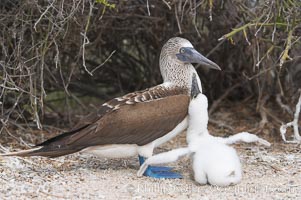
Blue-footed booby adult and chick.
Species: Blue-footed booby, Sula nebouxii
Location: North Seymour Island, Galapagos Islands, Ecuador
Image ID: 16659
Species: Blue-footed booby, Sula nebouxii
Location: North Seymour Island, Galapagos Islands, Ecuador
Image ID: 16659
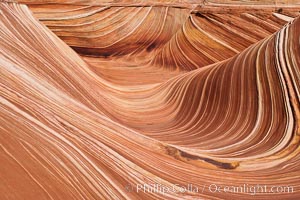
The Wave, an area of fantastic eroded sandstone featuring beautiful swirls, wild colors, countless striations, and bizarre shapes set amidst the dramatic surrounding North Coyote Buttes of Arizona and Utah. The sandstone formations of the North Coyote Buttes, including the Wave, date from the Jurassic period. Managed by the Bureau of Land Management, the Wave is located in the Paria Canyon-Vermilion Cliffs Wilderness and is accessible on foot by permit only.
Location: North Coyote Buttes, Paria Canyon-Vermilion Cliffs Wilderness, Arizona
Image ID: 20614
Location: North Coyote Buttes, Paria Canyon-Vermilion Cliffs Wilderness, Arizona
Image ID: 20614
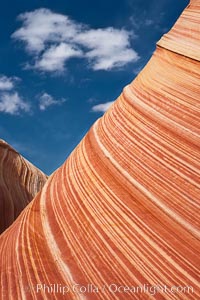
The Wave, an area of fantastic eroded sandstone featuring beautiful swirls, wild colors, countless striations, and bizarre shapes set amidst the dramatic surrounding North Coyote Buttes of Arizona and Utah. The sandstone formations of the North Coyote Buttes, including the Wave, date from the Jurassic period. Managed by the Bureau of Land Management, the Wave is located in the Paria Canyon-Vermilion Cliffs Wilderness and is accessible on foot by permit only.
Location: North Coyote Buttes, Paria Canyon-Vermilion Cliffs Wilderness, Arizona
Image ID: 20623
Location: North Coyote Buttes, Paria Canyon-Vermilion Cliffs Wilderness, Arizona
Image ID: 20623
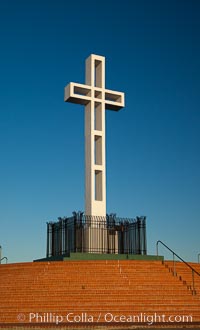
The Mount Soledad Cross, a landmark in La Jolla, California. The Mount Soledad Cross is a 29-foot-tall cross erected in 1954.
Location: La Jolla, California
Image ID: 26546
Location: La Jolla, California
Image ID: 26546
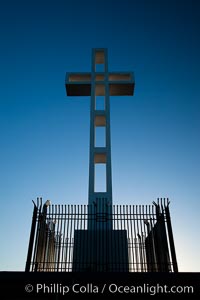
The Mount Soledad Cross, a landmark in La Jolla, California. The Mount Soledad Cross is a 29-foot-tall cross erected in 1954.
Location: La Jolla, California
Image ID: 26549
Location: La Jolla, California
Image ID: 26549
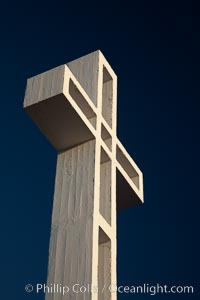
The Mount Soledad Cross, a landmark in La Jolla, California. The Mount Soledad Cross is a 29-foot-tall cross erected in 1954.
Location: La Jolla, California
Image ID: 26550
Location: La Jolla, California
Image ID: 26550
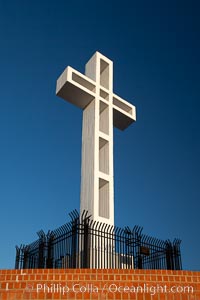
The Mount Soledad Cross, a landmark in La Jolla, California. The Mount Soledad Cross is a 29-foot-tall cross erected in 1954.
Location: La Jolla, California
Image ID: 26551
Location: La Jolla, California
Image ID: 26551
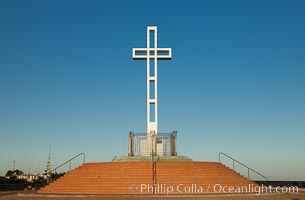
The Mount Soledad Cross, a landmark in La Jolla, California. The Mount Soledad Cross is a 29-foot-tall cross erected in 1954.
Location: La Jolla, California
Image ID: 26553
Location: La Jolla, California
Image ID: 26553
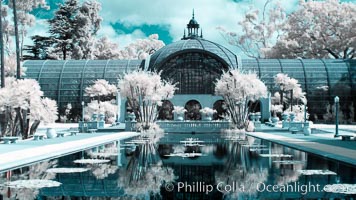
The Botanical Building in Balboa Park, San Diego. The Botanical Building, at 250 feet long by 75 feet wide and 60 feet tall, was the largest wood lath structure in the world when it was built in 1915 for the Panama-California Exposition. The Botanical Building, located on the Prado, west of the Museum of Art, contains about 2,100 permanent tropical plants along with changing seasonal flowers. The Lily Pond, just south of the Botanical Building, is an eloquent example of the use of reflecting pools to enhance architecture. The 193 by 43 foot pond and smaller companion pool were originally referred to as Las Lagunas de las Flores (The Lakes of the Flowers) and were designed as aquatic gardens. The pools contain exotic water lilies and lotus which bloom spring through fall.
Location: Balboa Park, San Diego, California
Image ID: 23096
Location: Balboa Park, San Diego, California
Image ID: 23096
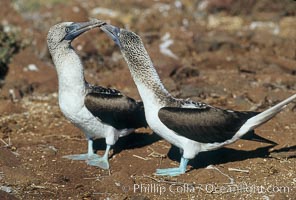
Blue-footed booby, courtship display.
Species: Blue-footed booby, Sula nebouxii
Location: North Seymour Island, Galapagos Islands, Ecuador
Image ID: 01794
Species: Blue-footed booby, Sula nebouxii
Location: North Seymour Island, Galapagos Islands, Ecuador
Image ID: 01794
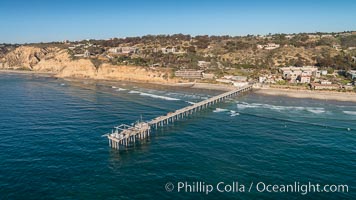
Aerial Photo of Scripps Pier. SIO Pier. The Scripps Institution of Oceanography research pier is 1090 feet long and was built of reinforced concrete in 1988, replacing the original wooden pier built in 1915. The Scripps Pier is home to a variety of sensing equipment above and below water that collects various oceanographic data. The Scripps research diving facility is located at the foot of the pier. Fresh seawater is pumped from the pier to the many tanks and facilities of SIO, including the Birch Aquarium. The Scripps Pier is named in honor of Ellen Browning Scripps, the most significant donor and benefactor of the Institution.
Image ID: 30739
Image ID: 30739
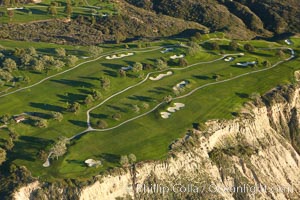
Torrey Pines Golf Course, south course holes 2, 4 and 5. Torrey Pines golf course, situated atop the magnificent 300 foot tall seacliffs, offers majestic views of the Pacific Ocean south to La Jolla. Scattered around the course are found Torrey pine trees, one of the rare species of pines in the world.
Location: San Diego, California
Image ID: 22312
Location: San Diego, California
Image ID: 22312
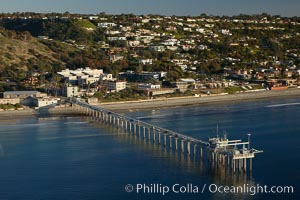
SIO Pier. The Scripps Institution of Oceanography research pier is 1090 feet long and was built of reinforced concrete in 1988, replacing the original wooden pier built in 1915. The Scripps Pier is home to a variety of sensing equipment above and below water that collects various oceanographic data. The Scripps research diving facility is located at the foot of the pier. Fresh seawater is pumped from the pier to the many tanks and facilities of SIO, including the Birch Aquarium. The Scripps Pier is named in honor of Ellen Browning Scripps, the most significant donor and benefactor of the Institution.
Location: Scripps Institution of Oceanography, La Jolla, California
Image ID: 22313
Location: Scripps Institution of Oceanography, La Jolla, California
Image ID: 22313
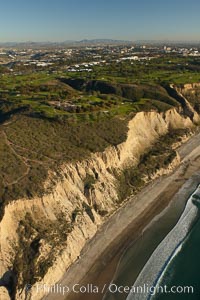
Torrey Pines golf course, situated atop the magnificent 300 foot tall seacliffs, offers majestic views of the Pacific Ocean south to La Jolla. Scattered around the course are found Torrey pine trees, one of the rare species of pines in the world. Some of La Jolla's biotechnology companies are seen on the far side of the golf course, along North Torrey Pines Road.
Location: San Diego, California
Image ID: 22320
Location: San Diego, California
Image ID: 22320
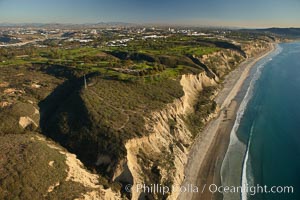
Torrey Pines golf course, situated atop the magnificent 300 foot tall seacliffs, offers majestic views of the Pacific Ocean south to La Jolla. Scattered around the course are found Torrey pine trees, one of the rare species of pines in the world. Some of La Jolla's biotechnology companies are seen on the far side of the golf course, along North Torrey Pines Road.
Location: San Diego, California
Image ID: 22357
Location: San Diego, California
Image ID: 22357
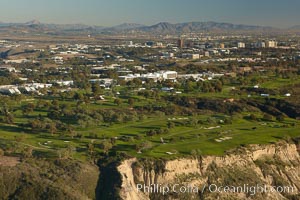
Torrey Pines golf course, situated atop the magnificent 300 foot tall seacliffs, offers majestic views of the Pacific Ocean south to La Jolla. Scattered around the course are found Torrey pine trees, one of the rare species of pines in the world. Some of La Jolla's biotechnology companies are seen on the far side of the golf course, along North Torrey Pines Road.
Location: San Diego, California
Image ID: 22394
Location: San Diego, California
Image ID: 22394
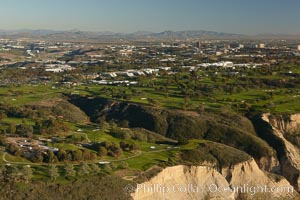
Torrey Pines golf course, situated atop the magnificent 300 foot tall seacliffs, offers majestic views of the Pacific Ocean south to La Jolla. Scattered around the course are found Torrey pine trees, one of the rare species of pines in the world. Some of La Jolla's biotechnology companies are seen on the far side of the golf course, along North Torrey Pines Road.
Location: San Diego, California
Image ID: 22418
Location: San Diego, California
Image ID: 22418
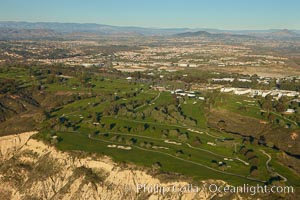
Torrey Pines golf course, situated atop the magnificent 300 foot tall seacliffs, offers majestic views of the Pacific Ocean south to La Jolla. Scattered around the course are found Torrey pine trees, one of the rare species of pines in the world. Some of La Jolla's biotechnology companies are seen on the far side of the golf course, along North Torrey Pines Road.
Location: San Diego, California
Image ID: 22426
Location: San Diego, California
Image ID: 22426
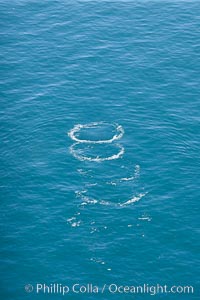
Blue whale footprints, the circular marks left behind on the ocean's surface after a whale has swum by.
Species: Blue whale, Balaenoptera musculus
Image ID: 26041
Species: Blue whale, Balaenoptera musculus
Image ID: 26041
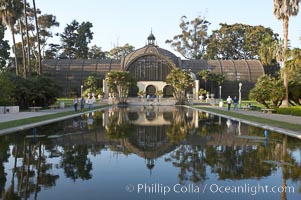
The Botanical Building in Balboa Park, San Diego. The Botanical Building, at 250 feet long by 75 feet wide and 60 feet tall, was the largest wood lath structure in the world when it was built in 1915 for the Panama-California Exposition. The Botanical Building, located on the Prado, west of the Museum of Art, contains about 2,100 permanent tropical plants along with changing seasonal flowers. The Lily Pond, just south of the Botanical Building, is an eloquent example of the use of reflecting pools to enhance architecture. The 193 by 43 foot pond and smaller companion pool were originally referred to as Las Lagunas de las Flores (The Lakes of the Flowers) and were designed as aquatic gardens. The pools contain exotic water lilies and lotus which bloom spring through fall. Balboa Park, San Diego.
Location: Balboa Park, San Diego, California
Image ID: 11273
Location: Balboa Park, San Diego, California
Image ID: 11273
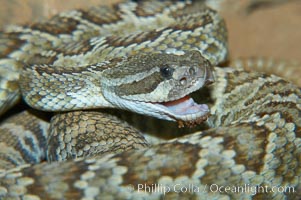
Southern Pacific rattlesnake. The southern Pacific rattlesnake is common in southern California from the coast through the desert foothills to elevations of 10,000 feet. It reaches 4-5 feet (1.5m) in length.
Species: Southern pacific rattlesnake, Crotalus viridis helleri
Image ID: 12584
Species: Southern pacific rattlesnake, Crotalus viridis helleri
Image ID: 12584
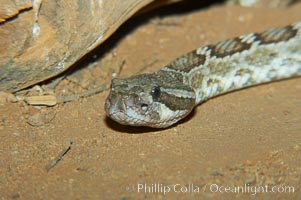
Southern Pacific rattlesnake. The southern Pacific rattlesnake is common in southern California from the coast through the desert foothills to elevations of 10,000 feet. It reaches 4-5 feet (1.5m) in length.
Species: Southern pacific rattlesnake, Crotalus viridis helleri
Image ID: 12586
Species: Southern pacific rattlesnake, Crotalus viridis helleri
Image ID: 12586
